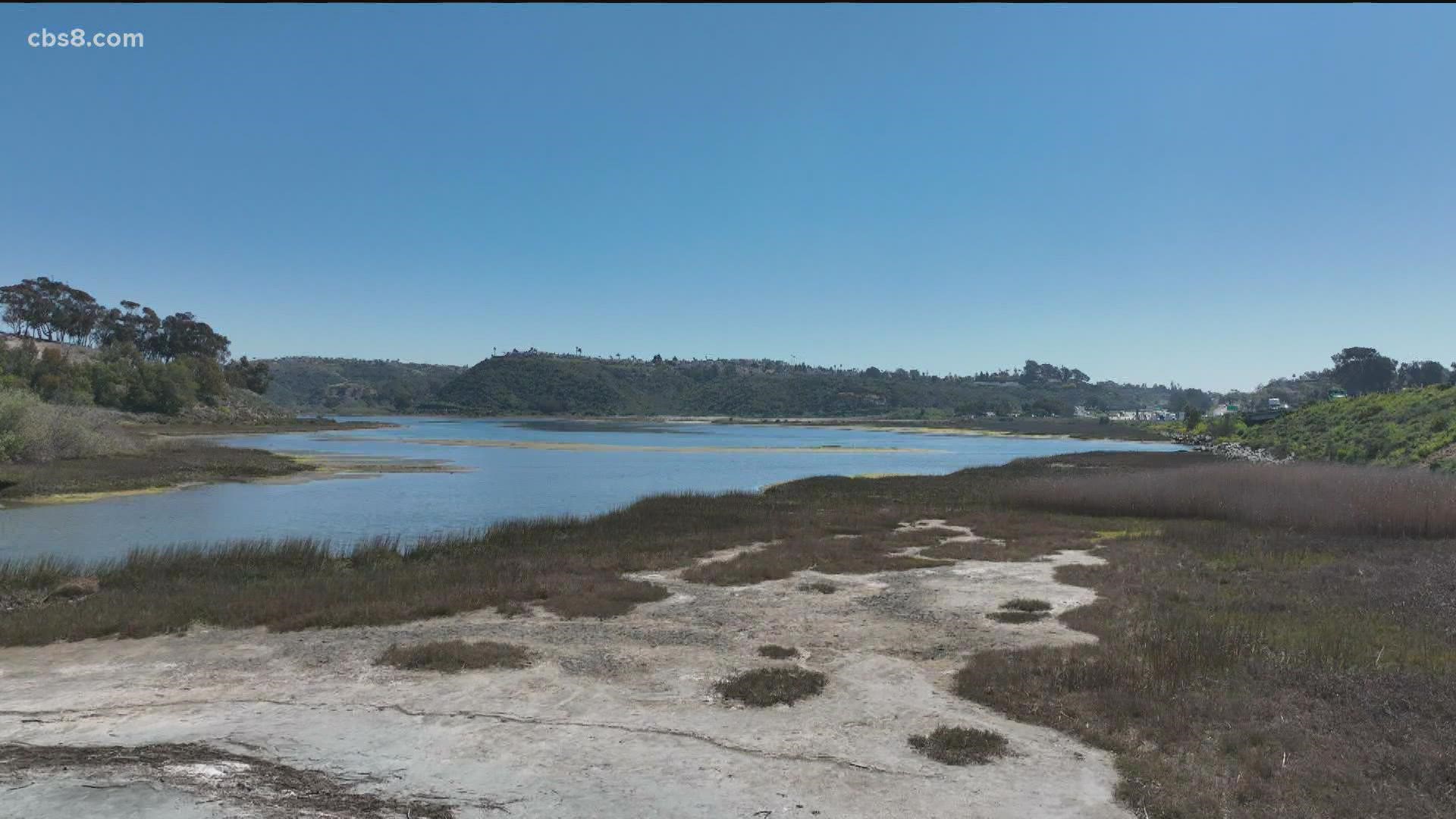SAN DIEGO COUNTY, Calif. — Carbon dioxide is a greenhouse gas and without a way to filter it out of the atmosphere, the Earth's temperature will continue to rise.
Through the Coastal Plant Restoration project, scientists at the Salk Institute in La Jolla are taking a new approach and studying the genetic makeup of wetland plants to fight climate change.
Todd Michael is one of the Research Professors at the Salk Institute for Biological Studies studying the genomes, the genetic makeup, of plants including Typha found at the Batiquitos Lagoon in Carlsbad. This is all to understand their adaptation to this environment.
The goal is to accelerate their growth to create a new generation of wetlands to capture and remove carbon dioxide from the atmosphere.
"Once the carbon is locked down in there, any decay or anything like that gets locked into that soil. So, these are great storage devices," explains Michael.
This project is called the Harnessing Plants Initiative. Joseph Noel, a Research Professor at the Salk Institute explains why wetland plants are key in fighting climate change. Noel and Michael are on the leadership team for this initiative.
"They produce a substance in their roots called cork, or the fancy term for that is called suberin. It's a huge molecule. It's full of carbon. The other cool thing about it is that when it is left behind in the sediment, it doesn't decompose. So, every carbon atom in that giant molecule called suberin comes out of the carbon dioxide in the atmosphere. So, it is an effective way of actually sucking greenhouse gases out of the atmosphere, lowering it, and then burying it in the sediments," said Noel.
Todd Michael dug up a sample plant. Pointing at the new life sprouting up, he stated "now, actually it will start to grow again. There's a new seeding coming up. So, it grows on this stem and then creates new buds each season."
The research being done here in San Diego is working towards efforts in expanding the wetland ecosystem worldwide. Rising sea levels, increased planet temperatures and human development have contributed to the roughly 70% reduction in the wetlands globally over the last century.
The success of restoration efforts could increase our planet's ability to bury up to 5 gigatons or 5 billion tons per year of carbon captured from the atmosphere, which is about 25% of the excess carbon dioxide generated by human activity.
"The ultimate goal is to find varieties of native species that are better able to adapt to future climates, so that when you lose these wetlands, you can go back and restore them in a more effective manner by putting back the best performing variety," said Noel.
So, while we are talking about how these plants are key in fighting climate change by storing carbon, wetland plants have always been critical to us here in San Diego.
They are our buffer and clean our water from excess nutrients, fertilizers, sediments, and polluted runoff to maintain the health of our county's ecosystem and our bellies.
"All the fish and shellfish that we are interested in, we also eat are all reproducing in the lagoons like this. So, these are the barriers that really protect our waters and clean our waters," said Noel.
WATCH RELATED: Earth 8: Shining a light on the issues that affect our planet (January 2022)

